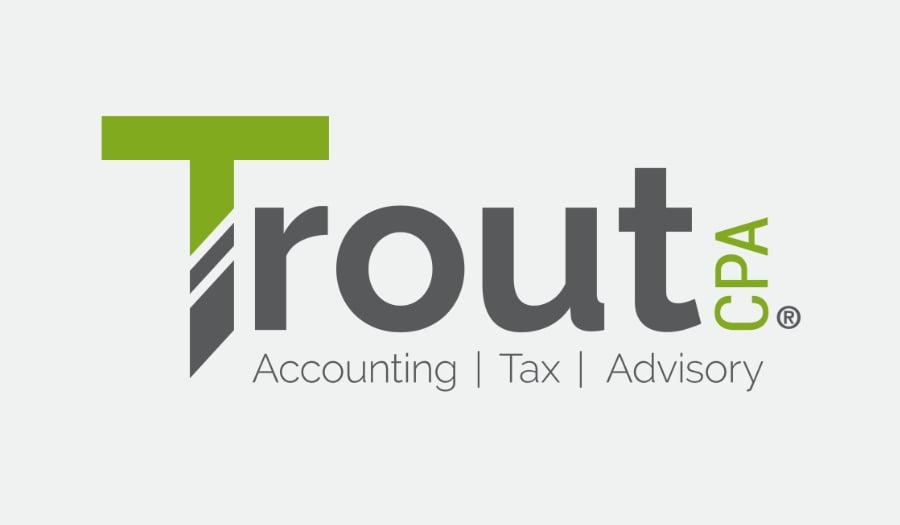On January 7, 2021, the U.S. Department of the Treasury (Treasury) and the Internal Revenue Service (IRS) issued final regulations governing the treatment of carried interests under Internal Revenue Code Section 1061. The final rules adopt certain aspects of the proposed regulations released in July 2020, but do make some changes, including changes favorable to taxpayers.
Section 1061 generally provides that certain long-term capital gains may be recharacterized as short-term capital gains if the holding period associated with the property triggering the gain is not more than three years. Thus, Section 1061 may operate to recharacterize long-term capital gain where the typical one-year holding period requirement has been met but the disposed property has been held for not more than three years.
Section 1061 will apply only to certain capital gain allocations made with respect to an applicable partnership interest (API). Section 1061(c)(1) defines an API to mean any interest in a partnership which, directly or indirectly, is transferred to (or held by) the taxpayer in connection with the performance of substantial services by the taxpayer, or any related person, in an applicable trade or business (ATB) for the partnership. Notwithstanding this general rule, an API does not include:
- A partnership interest held directly or indirectly by a corporation (corporate exception); and
- A capital interest in the partnership that provides the taxpayer with a right to share in partnership capital commensurate with the amount of capital contributed or the value of the partnership interest taxed under Section 83 (capital interest exception).
Further, under Section 1061(d), if a taxpayer transfers an API, directly or indirectly, to a related person, the taxpayer is required to recognize as short-term gain an amount equal to the excess, if any, of the amount of gain attributable to the sale or exchange of any asset that is not held for more than three years over any amount otherwise treated as short-term capital gain with respect to the transfer of the interest.
While the structure of the statute is relatively straightforward, implementation of these rules has proven challenging. The proposed regulations provided much needed guidance but also left unanswered questions and arguably created additional complexity. The final regulations largely adopt the proposed regulations with several taxpayer-favorable modifications, but modify the following areas in significant ways:
- Capital interest exception
- Capital interests acquired with debt financing
- Transfers of an API to related persons
- Look-through rule for API dispositions
- Reporting requirements
- Application of the ATB activity test
- Application of the corporate exception
- Applicability date
Modification of the Capital Interest Exception
Section 1061 generally does not apply to allocable gains recognized with respect to capital interests. The statute, however, does not provide the details necessary for taxpayers to determine the extent that an allocable gain is properly attributable to a capital interest versus the portion attributable to the API. The proposed regulations created a system found by many to be overly complex and unreflective of many common business arrangements. The final regulations provide revised and simplified rules intended to determine the amount of allocable gain that is commensurate with capital contributed.
Under the proposed regulations, the capital interest exception would apply only to allocations made in the same manner to all partners. Further, an allocation would be deemed to be made “in the same manner” if, under the partnership agreement, the allocation is based on the relative capital accounts of the partners receiving the allocation and the terms, priority, type and level of risk, rate of return and rights to cash or property distributions during the partnership’s operations and on liquidation are the same.
Under the final regulations, capital interest allocations must be commensurate with capital contributed, rather than commensurate with partner capital accounts maintained in accordance with Section 704(b). Further, the final regulations replace the “in the same manner” requirement with a “similar manner” requirement. Importantly, the “similar manner” requirement may be applied on an investment-by-investment basis or based on allocations made to a class of interests. For purposes of determining whether allocations satisfy the “similar manner” requirements, the final regulations consider:
- The amount and timing of capital contributed;
- The rate of return on capital contributed;
- The terms, priority, type and level of risk associated with the capital contributed; and
- The rights to cash or property distributions during the partnership’s operations and on liquidation.
Additionally, under the final regulations, an allocation to an API holder will not fail to qualify for the exception solely because the allocation is subordinated to allocations made to other partners or because an allocation to an API holder is not reduced by the cost of services provided by the API holder or a related person to the partnership. With respect to costs of services, the fact that API holders are not charged management fees on their capital or that their capital is not subject to allocations of API items will not prevent the API holder's capital interest from being eligible for the capital interest exception. Similarly, an allocation to an API holder will not fail if an API holder has a right to receive tax distributions while other partners do not have such a right, where such distributions are treated as advances against future distributions.
Finally, the final regulations extend these concepts to allocations made through tiered structures. An allocation made to a passthrough entity that holds an API in a lower-tier passthrough entity will be considered a capital interest allocation if made in accordance with the principles applicable in determining capital interest allocations. Under the final regulations, capital interest allocations retain their character when allocated to an upper-tier partnership so long as they are allocated among the partners in the upper-tier partnership with respect to such partners' capital interests in a manner that is respected under Section 704(b) (taking the principles of Section 704(c) into account).
Capital Interests Acquired with Debt Financing
Under the proposed regulations, for purposes of the capital interest exception, a partner’s capital account would not include the contribution of amounts directly or indirectly attributable to a loan or other advance made or guaranteed directly or indirectly by any other partner, the partnership or person related to the partner or partnership.
The final regulations generally retain these rules with a significant exception. Under the final regulations, a loan or an advance from another partner in the partnership or any related person with respect to such lending partner, other than the partnership, will be treated as capital contributed if the borrowing partner is personally liable for the repayment of the loan or advance. A borrowing partner will be considered personally liable for the loan or advance if:
- The loan or advance is fully recourse to the borrowing partner;
- The borrowing partner has no right to reimbursement from any other person; and
- The loan or advance is not guaranteed by any other person.
Transfers of API to Related Persons
The proposed regulations provided that the transfer (i.e., contribution, distribution, sale, exchange or gift) of an API or property distributed by an API to a related party would trigger gain to the partner equal to the excess of:
- The amount of gain that would be recharacterized as short-term capital gain under Section 1061 at the time the partnership disposed of its assets in a taxable transaction over
- The net long-term capital gain with respect to the transferred property for the taxable year of transfer.
The proposed regulations illustrated this rule in the following example:
- A, an individual, performs services in an ATB and has held an API in connection with those services for 10 years. The API has a fair market value of $1,000 and a tax basis of $0. A transfers all of the API to A's daughter, a related person, as a gift. Immediately before the gift, if the partnership had sold all of its assets for fair market value, A would have been allocated $700 of net long-term capital gain from assets held by the partnership for three years or less. Therefore, the amount of A’s gain that would be recharacterized as short-term capital gain on this hypothetical sale is $700. Since A did not recognize any gain on the transfer for federal income tax purposes, the reduction amount described above is $0.
- As a result of these rules, A includes the excess of $700 over $0 in gross income as short-term capital gain. Therefore, A includes $700 in gross income as short-term capital gain. A's daughter increases her basis in the API by the $700 of gain recognized by A on the transfer.
The final regulations clarify that Section 1061(d) is not intended as a gain acceleration provision. Rather, Section 1061(d) should be applied only to transfers in which long-term capital gain is otherwise recognized by the transferor. Treas. Reg. §1.1061-5(b) now provides that the term “transfer” means a sale or exchange in which gain is recognized by the owner of the API. To the extent applicable, the amount of gain subject to recharacterization is equal to the amount of capital gain from assets held for three years or less that would have been allocated to the API owner had the partnership sold all of its assets in a fully taxable transaction. This recharacterization rule applies only to the portion of the API transferred.
The final regulations modify the example contained in the proposed regulations to reflect these changes.
- A, an individual, performs services in an ATB and has held an API in connection with those services for 10 years. The API has a fair market value of $1,000 and a tax basis of $0, and no debt is associated with the API. A transfers all of the API to A’s daughter as a gift. A’s daughter is a related person but A’s gift is not a taxable transfer thus Section 1061(d) does not apply to A’s gift. However, the API remains an API in the hands of A’s daughter.
Look-through Rule for API Dispositions
The proposed regulations provided a limited look-through rule that could apply on the taxable sale of a partnership interest where that interest has been held for more than three years. Under the proposed look-through rule, gain on the disposition of an API held for more than three years is subject to recharacterization if:
- 80% or more of the partnership assets (based on fair market value) have a holding period of three years or less, and
- The assets would not generate (1) Section 1231 gain, (2) Section 1256 gain, (3) qualified dividends or (4) gains such as those characterized under the mixed straddle rules described in Section 1092(b).
Additionally, the look-through rule would apply in the case of certain transactions involving tiered partnerships.
To ease the administrative burden and overall complexity of the proposed rule, the final regulations modify certain aspects of the look-through rules described in the proposed regulations. Under the final regulations, gain on the disposition of an API is subject to recharacterization if:
- The API would have a holding period of three years or less if the holding period the API were determined by not including any period before the date an unrelated non-service partner is legally obligated to contribute substantial money or property directly or indirectly to the partnership subject to the API (For purposes of this rule, a substantial legal obligation to contribute money or property is an obligation to contribute a value that is at least 5% of the partnership’s total capital contributions as of the time of the API disposition); or
- A transaction or series of transactions has taken place with a principal purpose of avoiding potential gain recharacterization under Section 1061.
Application of the look-through rule is illustrated in the following example:
- On July 1, 2021, A and B form partnership PRS. At the time of PRS's formation, A agrees to provide substantial services to PRS in exchange for a 20% profits interest in PRS, and B, a partner that is an unrelated non-service partner, contributes $1 million in exchange for an interest in PRS and PRS immediately uses the capital to purchase marketable securities. On July 1, 2023, C, another unrelated non-service partner becomes legally obligated to contribute capital to PRS ($75 million) for the purposes of investing in and developing specified assets and is admitted into PRS. On July 3, 2023, and after C makes a contribution of $75 million, PRS uses this capital to acquire stock in portfolio company Z. On July 1, 2025, when Z has a value of $500 million and the value of the marketable securities is $2 million, A sells its API in PRS for $85.2 million.
- As a result of this sale, the look-through rule applies because B's contribution was non-substantial. Therefore, A includes $85.2 million in its API one-year disposition amount and $200,000 (20% share of $1 million gain in marketable securities) in its API three-year disposition amount. Accordingly, A's amount subject to recharacterization is $85 million.
Clarifications to the Reporting Requirements
The final regulations largely adopt the rules in the proposed regulations. Despite receiving comments requesting various changes and modifications, Treasury and the IRS declined to incorporate these comments into the final regulations. However, the final regulations clarify that if an affected partner requires information from a partnership in order to properly apply Section 1061, that information is to be requested from the partnership. The partnership, in turn, is required to provide the requested information to the extent necessary to determine the affected partner’s Section 1061 recharacterization amount. Partnerships with partners affected by Section 1061 should take notice of this requirement and ensure a process exists to develop and provide this information as necessary for its partners to calculate the Section 1061 recharacterization amount.
Application of the ATB Activity Test
A partnership interest will be considered an API only if the partnership conducts an applicable trade or business (ATB). Section 1061 defines an ATB as an “activity conducted on regular, continuous, and substantial basis” that involves (1) raising or return capital and (2) either investing in (or disposing of) specified assets or developing specified assets.
As noted above, the final regulations largely adopt the proposed regulations. In response to comments received by Treasury and the IRS, the preamble to the final regulations contains the following important considerations:
- Treasury and the IRS noted that whether a single project or the raising of capital involves the level of activity needed to constitute a trade or business under Section 162 is dependent on the facts and circumstances unique to the project or the raising of capital. Therefore, it will be important for taxpayers to evaluate each conducted activity to determine whether it rises to the level of a trade or business under Section 162.
- Comments were submitted regarding the scope of including activities carried out by related parties in determining whether an activity rises to the level of an ATB. The preamble to the final regulations notes that Treasury and the IRS will continue to study these questions and may issue further guidance. However, the statutory definition of ATB includes all activities, no matter how minimal, conducted by entities that are considered related parties.
- Treasury and the IRS confirmed that the aggregation rules relating to the activities creating an ATB are necessary to avoid abuse of Section 1061 by spreading various activities across multiple entities. Further, the final regulations retain the rule that it is not necessary for both raising or returning capital and investing in or developing specified assets to occur in each taxable year.
Application of the Corporate Exception
In general, Section 1061 does not apply to an API held by a corporate taxpayer. The final regulations confirm the position of the proposed regulations that both S corporations and passive foreign investment companies that have a qualified electing fund election in effect are not treated as corporations for purposes of Section 1061.
Applicability Date
Regulations published by Treasury and the IRS typically become final 60 days after the rule is published in the Federal Register, although statutory authority permits agencies to accelerate this date in certain situations. Treasury has concluded that a 60-day delay in the effective date of the final regulations is contrary to the public interest, so the 2021 final carried interest regulations are effective as from January 7, 2021, i.e., the date they were made available for public inspection. However, taxpayers may choose to apply the final regulations to a taxable year beginning after December 31, 2017, provided the regulations are applied consistently and in their entirety.





